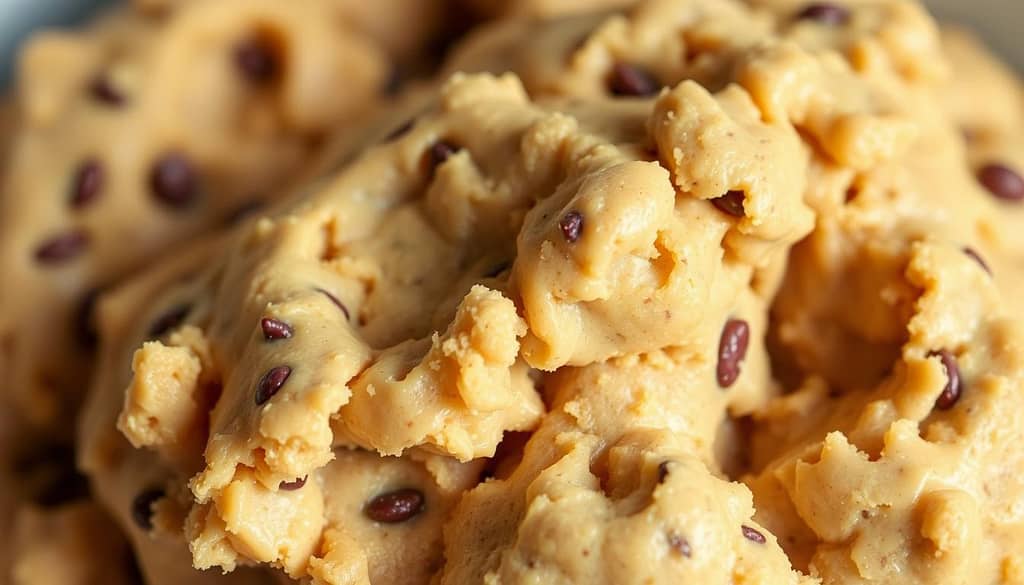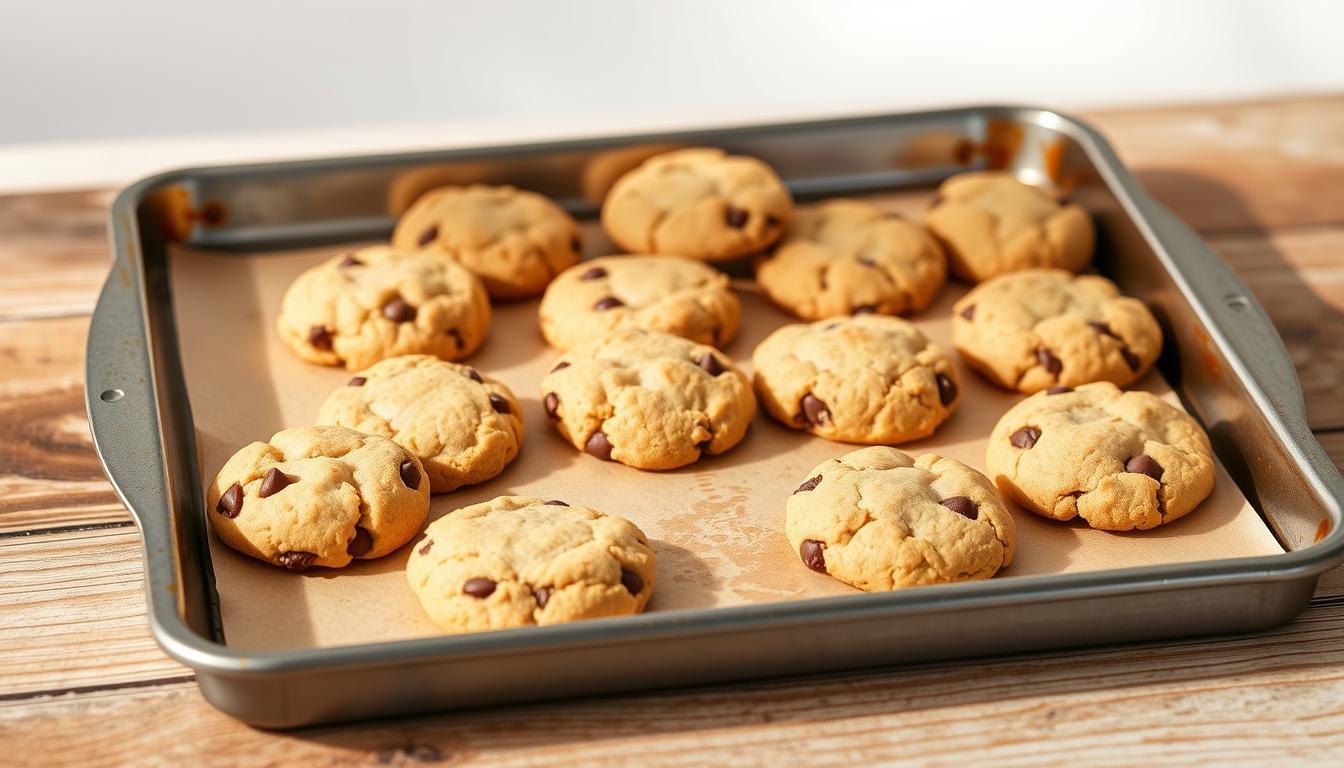Love classic treats but want something different? Chocolate chipless cookies offer a delicious twist for those who prefer their baked goods without chocolate. Whether you’re avoiding it due to allergies or simply want a change, this recipe keeps all the warmth and comfort of traditional favorites.
Using a trusted base from First Source’s famous recipe, these treats shine with a chewy texture and rich brown butter flavor. The secret? Balancing sugar ratios and chilling the dough properly. It’s an easy way to create crowd-pleasing desserts everyone will enjoy.
Perfect for gatherings or a cozy night in, these cookies adapt to your pantry. No chocolate? No problem! You’ll still get that golden, buttery goodness in every bite.
Key Takeaways
- A tasty alternative for those avoiding chocolate
- Uses a well-loved cookie base for reliable results
- Features a chewy texture with deep brown butter notes
- Requires proper dough chilling for best consistency
- Easy to customize based on available ingredients
Why Make Chocolate Chipless Cookies?
Looking for a dessert that skips chocolate but keeps the rich taste? These treats are perfect for anyone avoiding cocoa—whether by choice or necessity.

The Appeal of a Chocolate-Free Treat
Cookies without chocolate cater to growing dietary needs. Many people steer clear due to allergies or simply prefer other flavors. A friend’s aversion to cocoa inspired this recipe—proof that delicious alternatives exist.
Versatility for Allergies or Pantry Shortages
Ran out of chips? No worries. This dough adapts to pantry shortages, letting you swap in nuts or dried fruit. The absence of chocolate highlights the caramelized notes of brown butter, adding depth to every bite.
Plus, a quick chill in the freezer ensures they bake evenly—no spreading, just perfect texture every time.
Ingredients for Chocolate Chipless Cookies
The magic of these golden delights lies in their simple yet powerful ingredients. Each component plays a starring role, from the nutty depth of brown butter to the caramel notes of dark brown sugar. Here’s how to choose wisely.
Essential Pantry Staples
Gold Medal AP flour (10.5% protein) is ideal for a tender crumb. Unlike King Arthur’s higher-protein blend, it avoids excessive chewiness. Pair it with fresh baking soda and a pinch of salt to enhance flavor and texture.
First Source’s tip: Use 1 egg + 1 yolk for richness. The yolk adds moisture without making the dough too wet.
The Role of Brown Butter
Brown butter isn’t just trendy—it’s science. As Third Source notes, the Maillard reaction creates its nutty, toasty flavor. Melt unsalted butter until it turns amber, then cool slightly. This prevents over-salting (a risk with salted butter) and lets the caramelized notes shine.
Why Sugar Ratios Matter
Dark brown sugar’s extra molasses means chewier results and deeper flavor. Light brown sugar offers a milder taste. For balance, combine both or go full-dark for intensity.
Don’t skip the vanilla extract. Without cocoa, its floral sweetness takes center stage. First Source recommends a “heavy hand”—up to 2 teaspoons for bold aroma.
Step-by-Step Baking Instructions
Ready to bake golden, buttery delights? Follow these steps for flawless results. Precision matters—from browning butter to timing the bake—so let’s dive in.
How to Brown Butter Perfectly
Melt unsalted butter in a light-colored pan over medium heat. Watch for foam, then stir as it turns amber—about 5 minutes. Cool immediately to stop cooking. Pro tip: Use a light pan to spot the color change easily.
Mixing and Chilling the Dough
Combine browned butter with sugars at room temperature. Add eggs and vanilla, then fold in dry ingredients. Chill the cookie dough 30 minutes in the fridge or 20 in the freezer. This prevents spreading and boosts chewiness.
Baking Time and Temperature Tips
Preheat the oven to 350°F (or 400°F for crisp edges). For hot ovens, stack a second pan underneath to diffuse heat. Bake for 8–11 minutes until edges are golden. Line your sheet with parchment and space dough 2 inches apart.
- Check consistency: If dough feels sticky, add 1 tbsp flour (browned butter evaporates moisture).
- Rotate pans halfway for even browning.
- Cool on the sheet 5 minutes before transferring.
Expert Tips for the Best Results
Small tweaks make a big difference in achieving bakery-quality results at home. Whether you’re a beginner or a seasoned baker, these techniques ensure your treats turn out perfectly every time.
Handle the Dough with Care
Overmixing leads to tough results. Use a rubber spatula to fold ingredients gently—just until combined. This preserves the tender crumb and avoids activating too much gluten.
Timing Is Everything
For chewy centers, pull the tray out when edges are golden brown but centers look slightly underbaked. They’ll firm up as they cool. Rotate the pan halfway for even color.
Smart Storage Solutions
Freeze pre-scooped dough balls on parchment-lined sheets. Once solid, transfer to bags for up to 2 weeks. Bake straight from the freezer, adding 1–2 extra minutes.
- Flaky salt: Sprinkle pre-bake for infusion or post-bake for crunch.
- Revive stale treats: Microwave for 5 seconds to restore softness.
- Store cooled batches in airtight containers with a bread slice to retain moisture.
Conclusion
Golden brown treats can be just as satisfying without the usual add-ins. This recipe adapts to allergies or preferences, proving simplicity doesn’t mean sacrificing flavor.
Experiment with toasted flour or different sugars for unique twists. Third Source notes these tweaks deepen the caramel notes. Serve warm with milk or coffee for a cozy finish.
Share your creations! Tag your golden brown batches or inventive swaps. Whether you toast the flour or try coconut sugar, these cookies are your canvas.

